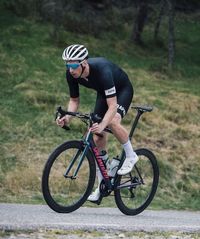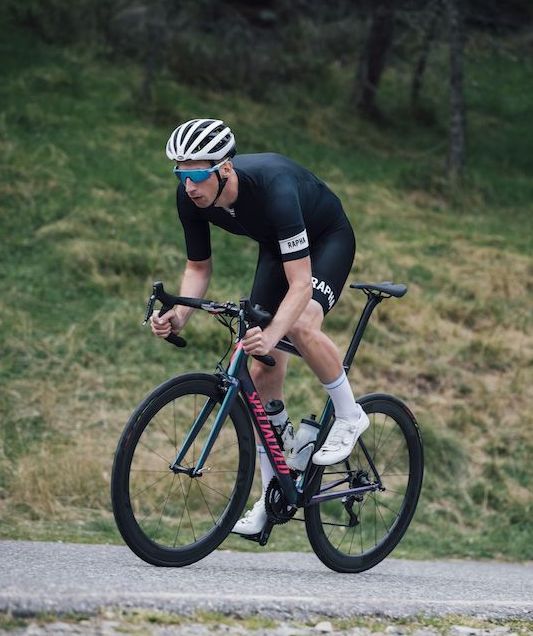Team pursuit: Everything you need to know for the Tokyo 2020 Olympic Games
Get to know the team pursuit for the Tokyo 2020 Olympic Games


The team pursuit is one of the Olympic Games' staple track cycling events, and it returns again for the Tokyo 2020 Olympics, which takes place between July 23 to 28 August 2021.
Tokyo 2020 cycling: Team pursuit
The Olympic team pursuit sees four riders cover a distance of four kilometres (16 laps) riding as a cohesive unit to give each other shelter when they are not the rider on the front.
A team will pursue another team that starts on the opposite side of the track, except for qualifying rounds when a team rides alone to set a time. The race is between the two teams on the track, with the winning team being the one that posts the fastest time.
A team’s time is taken from the third rider across the finish line. It is common to see a team lose one rider before the end, typically the weakest rider who cannot maintain the speed, or the rider in 'man one' position who puts in extra effort at the start before fading at the finish.
Each team lines up side-by-side on the pursuit line in the home and back straights with ‘man one’ in the lowest position, just above the black pursuit line. It is their job to quickly get the team up to top speed, but steadily, allowing the three other riders to fall in line behind them. This generally takes around one-and-a-half laps of a 250m track.
Once a team is up to speed each rider will spend one or one-and-a-half laps on the front of the chain before swinging up the track in the banking, allowing their team mates to pass underneath them before dropping down the track and on to the wheel of the last rider. The best teams will maintain a consistent top speed as they make these changes and not allow for gaps to open up between the riders to ensure they gain maximum shelter. Riders can do shorter or longer turns – from half a lap to two laps – depending on whether or not they are starting to struggle or the strongest of the quartet.
If a team is caught by their opponents, they must not affect a change to allow the faster team to safely overtake them. In a medal race the race is over once one team passes their opponents, often referred to as 'making the catch'. If both teams need to post a time for classification in a following round they both continue to cover the full four kilometres.
The latest race content, interviews, features, reviews and expert buying guides, direct to your inbox!
A pursuit bike is somewhat different to a usual track bike used for other events. It has a standard frame but is usually ridden with front and rear discs (on an indoor velodrome) and tri bars, with a gearing that is typically between 104 -120 inches.
The Olympics begins with qualification races against the clock to decide the eight teams who will compete in the first round, and whether they have the opportunity to race for gold.
The fastest qualifier races the fourth fastest, and the second fastest takes on the third fastest. The winner of each of those two races will compete in the gold medal final.
The fifth fastest qualifier races the eighth and the sixth fastest takes on the seventh.
The bronze medal final comprises the two fastest teams who didn't make it to the gold final.
Tokyo 2020 Team pursuit schedule
Monday, August 2, 3.30pm - 6.30pm Japan/7.30am - 10.30am UK
Women's Team Pursuit Qualifying
Men's Team Pursuit Qualifying
Tuesday, August 3, 3.30pm - 6.10pm Japan/7.30am - 10.10am UK
Women's Team Pursuit First round
Men's Team Pursuit First round
Women's Team Pursuit Finals
Women's Team Pursuit Victory Ceremony
Wednesday, August 4, 3.30pm - 7.00pm Japan/7.30am - 11am UK
Men's Team Pursuit Finals
Men's Team Pursuit Victory Ceremony
Follow on Twitter: @richwindy
Richard is digital editor of Cycling Weekly. Joining the team in 2013, Richard became editor of the website in 2014 and coordinates site content and strategy, leading the news team in coverage of the world's biggest races and working with the tech editor to deliver comprehensive buying guides, reviews, and the latest product news.
An occasional racer, Richard spends most of his time preparing for long-distance touring rides these days, or getting out to the Surrey Hills on the weekend on his Specialized Tarmac SL6 (with an obligatory pub stop of course).
